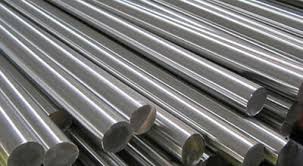The stainless steel round bar market in 2025 has shown subtle but meaningful changes across different parts of the world. While prices have slipped slightly in China, modest increases were recorded in Germany and the United States. These small shifts reflect broader challenges and opportunities, from oversupply and shifting demand to trade pressures and raw material costs.
Here’s a closer look at what’s been happening in each region and what it tells us about the state of the market.
🇨🇳 China: Slight Price Dip Amid Oversupply and Weak Export Demand
In the second quarter of 2025, the price of stainless steel round bars in China edged down from $2,284 to $2,278 per metric tonne, a 0.26% decrease compared to the first quarter.
The main reason for this decline? Too much supply and not enough demand.
Chinese mills have continued producing at high levels, but both domestic consumption and export activity haven’t kept pace. Sectors like machinery and construction have remained active, but their demand wasn’t strong enough to absorb the high production levels.
Add to this the impact of fluctuating nickel prices, which made buyers more cautious. Many businesses stuck to short-term purchasing rather than committing to large orders.
China’s export challenges also contributed to the softness. Trade restrictions and increased competition — particularly from lower-priced Southeast Asian suppliers — made it difficult for Chinese producers to sell abroad, leaving more product in the local market and putting downward pressure on prices.
Still, some support came from ongoing infrastructure projects and demand for corrosion-resistant materials used in more advanced industrial applications.
For latest updates, price queries, demand forecasts, and supplier information related to Stainless Steel Round Bar Prices, submit your request here: https://www.price-watch.ai/contact/
🇩🇪 Germany: Small Price Increase Backed by Stable Industrial Demand
Germany saw a 0.43% increase in stainless steel round bar prices in Q2 2025, driven by continued demand from key industrial sectors like automotive, engineering, and machinery.
While the broader European market has been cautious due to economic uncertainty and rising competition from cheaper imports, Germany’s market stayed resilient. One major reason: German producers are known for precision and quality, giving them an edge even in a tight market.
Meanwhile, raw material prices — particularly for nickel and chromium — remained relatively stable during the quarter, offering some relief for mills. That allowed producers to avoid sudden cost spikes while still maintaining supply levels.
Confidence was also boosted by expected EU trade measures aimed at limiting low-cost imports. Though these policies are still on the horizon, their anticipated impact has helped keep domestic prices from falling.
Overall, Germany’s market remains steady, supported by reliable demand and the strength of its manufacturing sector.
🇺🇸 United States: Prices Climb on Strong Industrial Activity and Higher Costs
In the United States, stainless steel round bar prices rose by 0.56% in Q2 2025, fueled by strong demand and rising input costs.
Key industries such as aerospace, automotive, and oil & gas continued to require large volumes of high-quality stainless steel for precision components and critical infrastructure. These sectors have high performance standards and aren’t willing to compromise on material quality.
At the same time, the U.S. economy is still benefiting from infrastructure spending, which has increased demand for construction and manufacturing-grade steel.
Meanwhile, higher energy and scrap metal costs have pushed up production expenses for mills. Most of these costs were passed on to buyers, contributing to the slight price increase.
Trade policy also plays a role. Favorable domestic trade regulations continue to support U.S. mills, giving them a competitive advantage even as global competition intensifies.
The outlook in the U.S. remains positive, with industrial demand expected to stay strong in the second half of the year.
🌍 Global Overview: A Market of Regional Differences
Here’s a quick summary of how prices have shifted across the three key markets:
| Region | Q2 Price Change | Main Drivers |
|---|---|---|
| China | ⬇️ 0.26% | Oversupply, cautious buyers, weak exports |
| Germany | ⬆️ 0.43% | Stable industrial demand, expected EU trade protections |
| USA | ⬆️ 0.56% | Strong industrial activity, rising input costs, infrastructure demand |
Although these changes are small in percentage terms, they reflect real supply and demand shifts in each region. From trade challenges to rising energy costs, various local factors are shaping the global stainless steel round bar market.
🔎 Looking Ahead: What Could Influence Prices Next?
As we move into the latter half of 2025, here are some key questions that could shape future pricing:
- Will Chinese mills reduce production to better align with demand?
- When will the EU’s trade protection policies take effect, and how will they impact import levels?
- Can U.S. demand remain strong in high-performance sectors despite increasing costs?
Answering these questions will be essential for buyers, sellers, and analysts tracking where the market is heading next.
✅ Conclusion: A Steady Market with Subtle Shifts
So far, 2025 has brought mild price changes to the stainless steel round bar market — but those changes highlight important shifts in regional dynamics.
- In China, overproduction and weak export demand are keeping prices soft.
- In Germany, industrial strength and expectations of trade protection are helping prices rise slightly.
- In the United States, rising costs and strong sectoral demand are supporting a modest upward trend.
While the global market isn’t seeing dramatic swings, these small changes reflect bigger themes — from supply chain balance to industrial recovery and the growing importance of high-quality materials.
For now, the outlook remains cautiously stable, with regional variations likely to continue driving the market in different directions.




